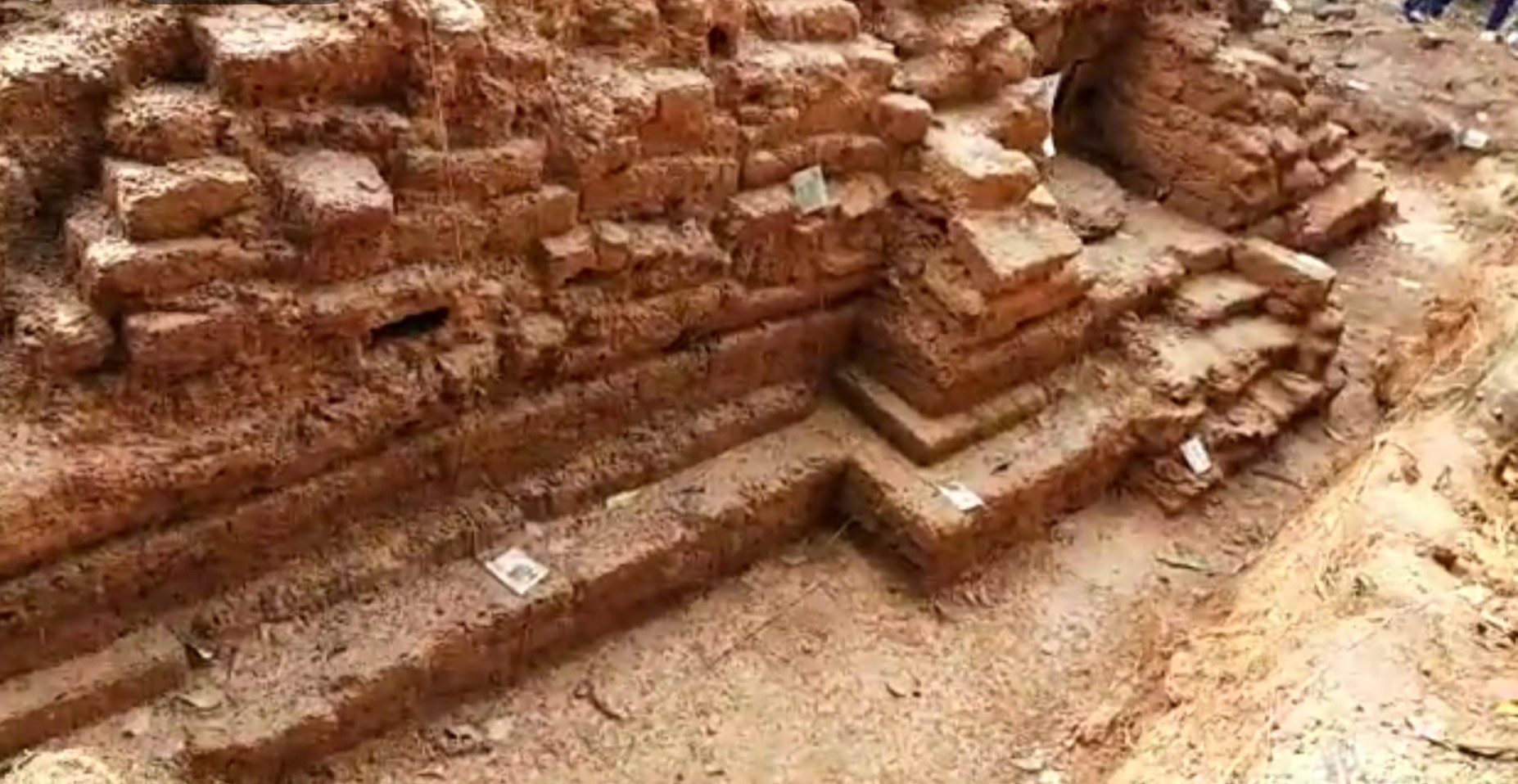YAN – A research team from Universiti Sains Malaysia (USM) has found two structures and an inscription stone almost intact, as well as earthenware fragments, believed to be dating back some 1,200 years, at the Bukit Choras archaeological site here.
The find by the USM Centre for Global Archaeological Research (CGAR), in collaboration with the National Heritage Department (NHD), was discovered during excavation and research works at the summit of Bukit Choras between August 28 and September 12.
USM CGAR senior lecturer Nasha Rodziadi Khaw, who led the excavation works, said the finds from the temple site could date back to around the eighth or ninth century AD, which is the same as most of the temple sites in the Bujang Valley and the development period of the Srivijaya Empire.
“The uniqueness of this temple at this archaeological site is first and foremost in how it has been preserved. We can see that the walls in the north, west, and south areas are well preserved.
“Secondly, we discovered two human-sized structures made of stucco, and the discovery of stucco has not been reported in the Bujang Valley but only in Sumatra and Java,” he said at a press conference here today.
Nasha said, based on preliminary research, that there is a similarity between the temple architecture in Bukit Choras and that of temples in West Java and Sumatra, while at the same time raising questions about the cultural relationship between Old Kedah and other sites in Southeast Asia.
He said the temple is estimated to measure 9 sqm but the actual size can only be confirmed after the excavation work is done, which is currently at 40% completion.
He stated that the Bukit Choras archaeological site is unique due to its remote location north of Gunung Jerai, whereas the other archaeological sites in Bujang Valley are mostly located south of Gunung Jerai in the vicinity of Sg Merbok and Sg Muda.
In addition, he said that his team must conduct much more research at the site, likely for several years, before reaching a final conclusion about the archaeological site.
“We hope that our future excavations will yield more information that will contribute to our understanding of the history of Old Kedah,” said Nasha, who added that the temple is believed to be the largest ever discovered in the Bujang Valley and that its architecture is quite intriguing.
Meanwhile, USM vice-chancellor Prof Datuk Abdul Rahman Mohamed said the university’s research team has been excavating the archaeological sites in Bujang Valley for the past 10 years with funding from the Higher Education Ministry.
“So, we are working with NHD and other parties on how we want to develop our archaeotourism; another is to write history, which we previously relied on Western researchers for, but now with this discovery, it can be improved,” he said.
The discovery of structures and inscriptions, as well as earthenware fragments, at the archaeological site, according to NHD director-general Mohd Azmi Mohd Yusof, could elevate the location to be used as a tourism product, similar to other archaeological sites. – September 22, 2023

